Progarchives.com has always (since 2002) relied on banners ads to cover web hosting fees and all.
Please consider supporting us by giving monthly PayPal donations and help keep PA fast-loading and ad-free forever.
/PAlogo_v2.gif) |
|
Post Reply 
|
Page <1 3456> |
| Author | ||||
A B Negative 
Forum Senior Member 
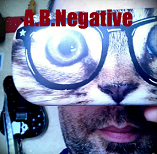
Joined: May 02 2006 Location: Methil Republic Status: Offline Points: 1594 |
 Posted: January 03 2007 at 07:10 Posted: January 03 2007 at 07:10 |
|||
It's not the same coz the emPHAsis is in differENT places!
|
||||
|
"The disgusting stink of a too-loud electric guitar.... Now, that's my idea of a good time."
|
||||
 |
||||
Abstrakt 
Forum Senior Member 
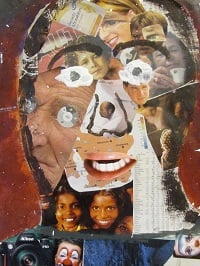
Joined: August 18 2005 Location: Soundgarden Status: Offline Points: 18292 |
 Posted: January 14 2007 at 02:29 Posted: January 14 2007 at 02:29 |
|||
|
^ What?
5 fast bars of 5/8 creates 25/8. Anyone used that time signature?
Can you make a decent song in 2/16?
6 bars of 5/8 plus a bar of 2/8 on top of two bars of 4/4.
Hmm.... enough of my crazy ideas
|
||||
 |
||||
Trademark 
Forum Senior Member 
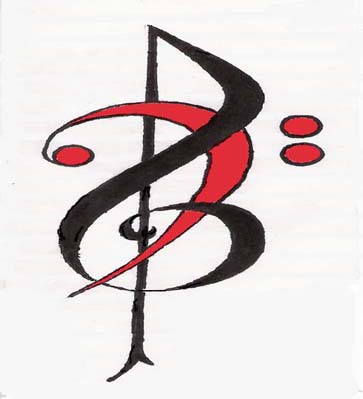
Joined: November 21 2006 Location: oHIo Status: Offline Points: 1009 |
 Posted: January 15 2007 at 15:10 Posted: January 15 2007 at 15:10 |
|||
|
Your ideas are not crazy , they are simply incorrect. A-B Neg is right. Emphasis is the ruling factor in determining meter. You need to look this stuff up (try the New Harvard Dictionary of Music or talk to anyone wsith a degree in music theory) and try to gain some TRUE understanding of it. Rhythm and meter are not mere number games.
|
||||
 |
||||
explodingjosh 
Forum Senior Member 
Joined: February 10 2007 Location: United States Status: Offline Points: 507 |
 Posted: May 06 2008 at 23:25 Posted: May 06 2008 at 23:25 |
|||
Well if you'd just listen to the drums, it wouldn't be near as suprising. Try memorizing that pattern in tempo.... I've only been able to pull it off a handful of times without the song playing.
Ten bucks says that Bill Bruford just sees it as 4/4 with an added 3/16, and Dave Stewart sees it as 7+7+5/16. ------------------------------------ And any signature you see where the bottom number is not '2-to-the-power-of-something' virtually does not exist in music. I think that includes 2^0, which is 1.... hmm does single meter exist? ----------------------------------- I think polyrhythms are a different story though. Like 9:4, 7:4 ... I learned how to drum a 5:4 and 7:4 pattern (with my hands, I'm not a drummer, yet  ) by learning how 5/16 and 7/16 interacts with 4/4 when the 16th note of each has the same set tempo. ) by learning how 5/16 and 7/16 interacts with 4/4 when the 16th note of each has the same set tempo. |
||||

|
||||
 |
||||
Man With Hat 
Collaborator 
Jazz-Rock/Fusion/Canterbury Team Joined: March 12 2005 Location: Neurotica Status: Offline Points: 166178 |
 Posted: May 07 2008 at 00:25 Posted: May 07 2008 at 00:25 |
|||
In theory yes. I don't know a song that uses it though. I'd love to find one!
|
||||
|
Dig me...But don't...Bury me
I'm running still, I shall until, one day, I hope that I'll arrive Warning: Listening to jazz excessively can cause a laxative effect. |
||||
 |
||||
The Pessimist 
Prog Reviewer 
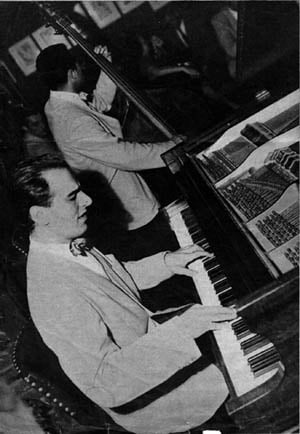
Joined: June 13 2007 Location: United Kingdom Status: Offline Points: 3834 |
 Posted: May 07 2008 at 11:09 Posted: May 07 2008 at 11:09 |
|||
|
The middle section of The Mars Volta's "Cygnus... Vismund Cygnus" is in 29/16. I doubt that's very toppable. Speaking of which, what is the time signature for the riff after the drum solo in One Word - Mahavishnu Orchestra? I just cannot figure that bitch out man, it's doing my nut in...
|
||||
|
"Market value is irrelevant to intrinsic value."
Arnold Schoenberg |
||||
 |
||||
Unsouled 
Forum Newbie 
Joined: January 05 2008 Location: New York Status: Offline Points: 9 |
 Posted: May 07 2008 at 15:10 Posted: May 07 2008 at 15:10 |
|||
|
I don't think there is a "most complex" time signature... many being listed are odd beats of 16th notes, and it can be argued that a lengthier signature is more complex, I guess. However, I think it's really the relationship between the signatures that adds complexity - polyrhythmic meters between band members, time shifts. (One of the most easily discernible polymeters I can think of is in the bridge of Lateralus, with the high hat vs. the bass, and eventually the guitar and vocals.) Tool's Schism also goes through many time changes.
Two other notes: 1. Fripp's 6-note repeating theme in Frame by Frame is in 3/8, weaving in and out of the rest of the band going in 4/4. I believe this is the "81/8" mentioned earlier. 2. The distorted guitar section of Frakctured is running in 15/16. |
||||
 |
||||
jammun 
Prog Reviewer 
Joined: July 14 2007 Location: United States Status: Offline Points: 3449 |
 Posted: May 07 2008 at 20:29 Posted: May 07 2008 at 20:29 |
|||
|
There was Don Ellis back in the early-70's, who had a big band which specialized in weird/complex time signatures, 27/16, etc. Check out his Wikipedia entry. |
||||
 |
||||
manray 
Forum Newbie 
Joined: May 12 2008 Location: Birmingham, UK Status: Offline Points: 39 |
 Posted: May 13 2008 at 09:33 Posted: May 13 2008 at 09:33 |
|||
|
Point of view point by cornelius
AMAZING |
||||
 |
||||
Madklikor 
Forum Newbie 
Joined: July 21 2006 Status: Offline Points: 8 |
 Posted: May 13 2008 at 15:48 Posted: May 13 2008 at 15:48 |
|||
|
"One might just ask well as what the most complicated mathematical
equation is. The equation might take up many pages and the answer could
turn out to be 1. The time signature thing is exactly the same. The
gibberish time signatures you all are putting up DO NOT EXIST
musically, they only exist mathematically.
The measures in question all break down into sub groupings of 2, 3, or 4 pulses. No player will ever count to 27 (or even 17 or 11) as he reads his part. He will look at the music and break it down into sub-groupings, take out his pencil and mark the score accordingly." It's not because musicians don't count them as they are written that they doesn't "exist". |
||||
 |
||||
Madklikor 
Forum Newbie 
Joined: July 21 2006 Status: Offline Points: 8 |
 Posted: May 13 2008 at 16:07 Posted: May 13 2008 at 16:07 |
|||
Please, stop talking like you know something when you obviously don't. |
||||
 |
||||
Trademark 
Forum Senior Member 

Joined: November 21 2006 Location: oHIo Status: Offline Points: 1009 |
 Posted: May 13 2008 at 16:27 Posted: May 13 2008 at 16:27 |
|||
|
I put this post up well over a year ago and then let it go. If you all want to play around in your little fantasy world that is certainly fine with me, but absolutely everything I said in that post is 100% correct. 12 years of formal music education 3 advanced degrees (2 Masters and 1 PhD), and 15 years practical experience playing and teaching music theory gives me some indication that I just "might" know what I am talking about.
If you want to get into I can and I will back up everything I've said; if not you're the one who needs to let it drop. Don't call me out if you don't want the answers. If you want to live in a magical world where incorrect information is "right" because some kids say so, as I said, I'm OK with that. if you want to know the truth, you'll have to be willing to learn. Which is it going to be? Edited by Trademark - May 13 2008 at 16:29 |
||||
 |
||||
Madklikor 
Forum Newbie 
Joined: July 21 2006 Status: Offline Points: 8 |
 Posted: May 13 2008 at 17:50 Posted: May 13 2008 at 17:50 |
|||
I'm not saying that everything you wrote is wrong, but I don't see how anyone with "2 masters and 1 PhD" would write things like some stuff you wrote. With that experience, you should know that truth in music theory is certainly not something definitive, especially when it comes to NOTATION. Anyone who have true understanding of these problems should know that it doesn't concern what "exist" and what "doesn't exist", but how you write a musical phenomenon. and I have seen none of this in your writing. I would add that a quick glance at the Grove dictionary shows that the definition for "time signature" can totally change from one author to the next (the Grove definition has little to do with the Harvard dictionnary definition you gave). And please, don't try to lecture me... that is simply ridiculous, because I happen to have pretty much the same number of degrees, and you've got no kind of superiority from this stuff (or any kind of superiority for that matter). But I do have a question. I do agree that there is no NEED to write the "time signature" in some of these cases and that some prog musicians are looking to hard into time signatures. But what about Stravinsky's Glorification de l'élue from you-know-what? If I wrote the beginning like this DT song, it would go : 5/8 5/8 9/8 5/8 7/8 3/8 2/4 7/4 3/4 7/4 3/8 2/4 7/4 6/8 5/8 9/8 5/8 5/8 7/8 5/8 3/8 3/4 3/8 4/4 3/8 3/4 3/4 5/4 etc. I guess Stravinsky was a stupid composer who was playing in a a little fantasy world, huh ? Edited by Madklikor - May 13 2008 at 19:32 |
||||
 |
||||
ExittheLemming 
Forum Senior Member 

Joined: October 19 2007 Location: Penal Colony Status: Offline Points: 11415 |
 Posted: May 13 2008 at 19:13 Posted: May 13 2008 at 19:13 |
|||
|
All very interesting stuff certainly BUT has anyone yet run this past that timid and self-effacing creature lurking in the shadows called: PHRASE LENGTH ? (The Bambi of music theory)
This is what determines ANY time signature, it's where the musical statement(s) can be deemed to have reached a natural pause for breath. Similar to punctuation for written sentences. After all, taking the reductio ad absurdum route here, we could theoretically transcribe 'Three Blind Mice' into say 15/16 with disingenuous recourse to rests to 'balance the books' The problem with so many of the 'math rock/prog metal' bands around is that they just seem to either add or subtract beats to bog standard rock riffage and call it complexity. If a musical phrase is conceived that expires naturally after an unconventional number of beats, then fine and dandy, but all I can hear is the furious planing of round pegs into square holes. Edited by ExittheLemming - May 13 2008 at 19:37 |
||||
 |
||||
Trademark 
Forum Senior Member 

Joined: November 21 2006 Location: oHIo Status: Offline Points: 1009 |
 Posted: May 13 2008 at 23:31 Posted: May 13 2008 at 23:31 |
|||
|
Its funny because when I see this "Please, stop talking like you know something when you obviously don't."
It really doesn't follow that the next statement would be this: "I'm not saying that everything you wrote is wrong" followed later by "I do agree that there is no NEED to write the "time signature" in some of these cases" Which is it? It was crystal clear to me from your first comment that you did consider it to be wrong, and nothing I stated was wrong in any way. What changed your mind? Meters like 27/16 and so forth, are false and artificial (is that better than do not exist?) because they cannot be perceived aurally in music. The human brain breaks pulses or beats down into groupings of 2, 3, or 4, and meter (which is really what we are talking about) is established only by repetition of discernable patterns. In short, without the aid of the paper sheet music the brain will not remember the patterns that add up to 27 and will not "count" to 27 over and over again to establish the pattern and rise to the level of being meter according to the accepted definition. Speaking of definitions, the Grove definition reads: "Meter is the grouping of beats in a regularly recurring pattern (the bar or measure) defined by accentuation. At a higher level than the beat and in more complex ways, meter (whether explicitly marked or only sensed) provides the temporal framework of the music within which rhythm is established and perceived." The Harvard Dictionary of Music meter is: "The pattern in which a steady succession of rhythmic pulses is organized", and it is "characterized by the regular recurrence of such patterns." These definitions are exactly the same. The Grove gives more detail, but says the exact same thing. Where is the difference you mention? Neither the DT example nor the Stravinsky meet the accepted definition for meter as there is no repetition. Both are highly rhythmic, but non-metric and so the use of meter signatures is superfluous and confusing to players attempting to read from printed music. There is only a steady pulse and random groupings of 2, 3, and 4 beat patterns which do not repeat. Orchestras often have no more than 4-6 hours rehearsal time for incredibly complex and difficult pieces of music. if the composer handicaps them by writing foolishness like 19/16 or whatever, he's shooting himself in the foot because he'll get a poor performance AND no more work from that particular conductor. Music performed from memory gives a little more latitude, but not much. Make the player's job harder (for no other reason than to stroke your own ego) and you won't have your music performed. I assume that this is the example given that you're comparing to Stravinsky: "In order, each entry written once: 4/4, 7/8, 3/4, 13/16, 15/16, 17/16, 14/16, 5/4, 6/8, 2/4, 5/8, 11/4, 9/4, 7/16, 6/16, 5/16, 10/16, 9/8, 15/8, 12/16, 16/16 (3+3+3+3+2+2), 3/8." The Stravinsky comparison doesn't hold up too well for a couple of reasons. I'll try to explain without lecturing.  The first is "theoretical". In the Stravinsky example there are no beat groupings with more than 9 beats. For some reason which I'd have to do some research to find more information about, the abiilty to process more beats than this drops off sharply as the top number in the meter sig. rises. 9 is OK, 11 and 13 get rough, and anything above that would be considered a no-no. I wrote a piece about 15 years ago with a longish section in 13/8. Every time this piece has been performed (half dozen or so) the conductors asked me to "re-bar" the 13/8 section into alternating measures of 7/8 and 6/8 because the players couldn't stay on track through the section. It made perfect sense to me on paper, but it was a performance problem every time. When I finally gave in and made the changes the performances improved dramatically; everyone stayed together. Players won't count and conductors can't conduct (especially if the players won't count) with meter sigs like that. They get out their pencils and re-do the score which makes them annoyed with the composer for needlessly wasting their rehearsal time. The publisher I have for my music now would laugh me out of the building if I put something written in 17/16 on his desk. As a composer you (I) might as well accept reality. The first is "theoretical". In the Stravinsky example there are no beat groupings with more than 9 beats. For some reason which I'd have to do some research to find more information about, the abiilty to process more beats than this drops off sharply as the top number in the meter sig. rises. 9 is OK, 11 and 13 get rough, and anything above that would be considered a no-no. I wrote a piece about 15 years ago with a longish section in 13/8. Every time this piece has been performed (half dozen or so) the conductors asked me to "re-bar" the 13/8 section into alternating measures of 7/8 and 6/8 because the players couldn't stay on track through the section. It made perfect sense to me on paper, but it was a performance problem every time. When I finally gave in and made the changes the performances improved dramatically; everyone stayed together. Players won't count and conductors can't conduct (especially if the players won't count) with meter sigs like that. They get out their pencils and re-do the score which makes them annoyed with the composer for needlessly wasting their rehearsal time. The publisher I have for my music now would laugh me out of the building if I put something written in 17/16 on his desk. As a composer you (I) might as well accept reality. So getting back to Igor, he was well within the tested and accepted limits (the limits are not arbitrary, there's actual research to back up common practice) of notation with that segment of Le Sacre. The DT example, on the other hand, has 9 (out of 22) "measures" in sigs with top numerals over 9, and this is the real problem with it. To be readable (notice I did not say playable) those would need to be broken down further and really it would be best to simply leave them out as is common practice in the art-music world. (exceptions exist for everything and you may be able to find a better example. Try the Bartok Sonata for 2 pianos & Percussion or Music for strings, Percussion & Celsta. I have the scores at the moment and it might be fun.) Here's the other thing which you may or may not know about Le Sacre. In his handwritten sketches for the piece there were no bar lines. Stravinsky originally conceived this section without meter signatures. Why then, did he put them in the score for you to quote? He did so at the specific request of Vaslav Nijinsky, the choreographer for the Ballet Russe for whom the piece was originally composed. Nijinsky needed the numbers in order to plan out his choreography. The dancers have to count steps since they cannot have the music in front of them when they perform and the choreography for Le Sacre was unbelievably difficult (at least for its time). Through the rehearsals and even during the disastrous 1st performance in Paris in 1913 he would stand in the wings off stage and shout out the numbers to the dancers to help THEM keep their place. The orchestra would have been just fine without them and Stravinsky knew it. The main reasons for the use of these artificial meters was summed up very well by another poster early on in the thread, "Maybe it's also ego, you know, the more complex you write a time signature the more impressive you seem to others." That IS the reason. The complete and total truth of that statement is born out by the very existence of the thread. If the schoolboys weren't impressed by the big numbers... Well boys, "Here's your sign". Edited by Trademark - May 14 2008 at 12:58 |
||||
 |
||||
Madklikor 
Forum Newbie 
Joined: July 21 2006 Status: Offline Points: 8 |
 Posted: May 14 2008 at 13:54 Posted: May 14 2008 at 13:54 |
|||
|
My long answer has been erased with the attack, I'm not writing everything again. A few points :
- The questions here : "how do I write these musical phenomenons?" and "what is useful to write?", not "what does exist?". And there are no rules, it depends of the cases. With complex rhythm structures, sometimes time signatures are useless, sometimes they're a way to emphasize structure, sometimes they can be point of reference... which leads to : - Rock music isn't classical music. Rock is about repeated riffs, drum patterns, cycles... You can write stuff in rock music that you wouldn't write in classical music, or write in a different way. If the main riff in a song is repeated 32x and is in 3+4+4+3+4/8, I don't see any problems to write it that way, or 19/8, or 9/4, instead of 3/8+4/8+4/8+3/8+4/8, or whatever. Time signature could only indicate duration here. - That DT song has no 11/4, 17/16 and stuff (the only "unusual" time signature is 15/8), so the Stravinsky comparaison does hold up (they share some rhythmic means). Fanciful time signatures come from bad transcriptions. Instead of lecturing people, you could have simply corrected the transcriptions (I don't think 9/16+12/16+8/16 (Mars volta's Cygnus) would seem less "complex" than 27/16 to anyone). - "Time signature" does not equal "meter". - What Bartok example do you think of? - If you're just trying to say that 27/16 is a stupid way to note a musical phenomenon, there is no need to tell everyone they live in some "magical world", because most of time signatures in this thread are simple and coherent. I think the answer you gave me here isn't quite the same you gave to other people before, it sounds to me like you just wanted to show off and lecture people. Edited by Madklikor - May 14 2008 at 14:27 |
||||
 |
||||
Abstrakt 
Forum Senior Member 

Joined: August 18 2005 Location: Soundgarden Status: Offline Points: 18292 |
 Posted: May 14 2008 at 14:04 Posted: May 14 2008 at 14:04 |
|||
|
Hey, someone brought back this little monster!
|
||||
 |
||||
Madklikor 
Forum Newbie 
Joined: July 21 2006 Status: Offline Points: 8 |
 Posted: May 14 2008 at 14:29 Posted: May 14 2008 at 14:29 |
|||
|
What monster?

|
||||
 |
||||
BaldJean 
Prog Reviewer 
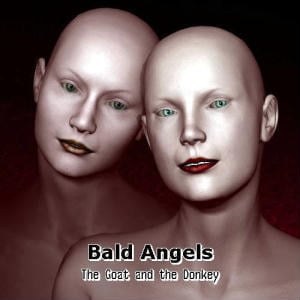
Joined: May 28 2005 Location: Germany Status: Offline Points: 10377 |
 Posted: May 14 2008 at 15:18 Posted: May 14 2008 at 15:18 |
|||
|
try Roman Bunka's album "Dein Kopf ist ein schlafendes Auto" and listen to "Glowin'". also listen to Embryo's album "Embryo's Reise". Meshuggah is simple compared to these rhythms
|
||||
 A shot of me as High Priestess of Gaia during our fall festival. Ceterum censeo principiis obsta |
||||
 |
||||
MikeEnRegalia 
Special Collaborator 
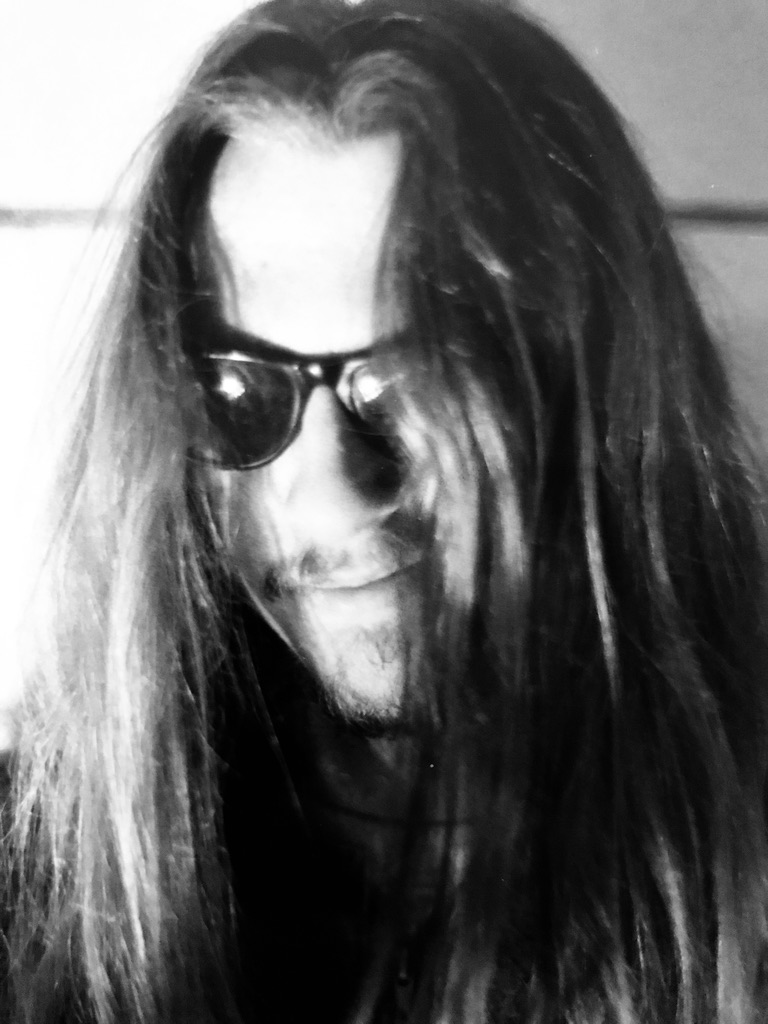
Honorary Collaborator Joined: April 22 2005 Location: Sweden Status: Offline Points: 20414 |
 Posted: May 14 2008 at 17:02 Posted: May 14 2008 at 17:02 |
|||
|
^ what did Meshuggah ever do to you?
|
||||
 |
||||
Post Reply 
|
Page <1 3456> |
| Forum Jump | Forum Permissions  You cannot post new topics in this forum You cannot reply to topics in this forum You cannot delete your posts in this forum You cannot edit your posts in this forum You cannot create polls in this forum You cannot vote in polls in this forum |